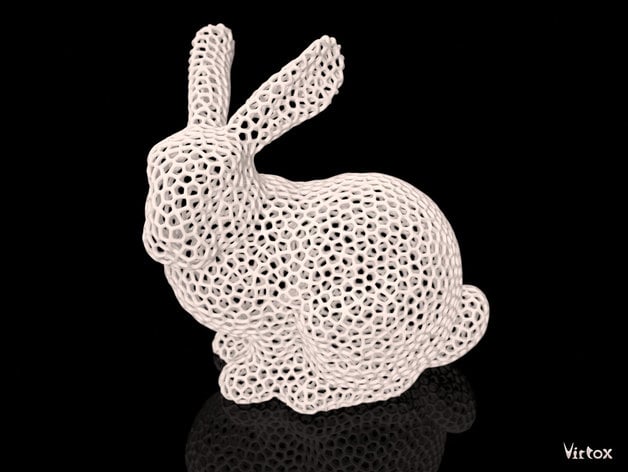
Stanford Easter Bunny - Voronoi
thingiverse
The author tested true Voronoi patterns on a 1mm thick voxel model of the Stanford Bunny in an Easter-inspired project. To achieve this, they used charge particle simulations to generate a cell-center distribution. The particles within the bunny model could move freely and interacted with each other. Over time, these particles formed a near-perfect distribution across the surface. Subsequently, a 1mm wide Voronoi pattern was generated within the same voxel model, resulting in 1mm wires. Finally, the model was polygonized using a marching cubes algorithm and cleaned with VCG lib functions. The resulting STL files are named "Stanford_Bunny - Voronoi pattern" and "Stanford_Bunny - Voronoi2 pattern." These patterns were based on single charges and sets of 2 linked charges, respectively. The author also acknowledged Roman Hegglin's work on the Stanford Bunny Voronoi style. They emphasized that while the project is not a derivative, proper credit must be given to the original sources. Lastly, they mentioned that the current size is 10cm and wires are approximately 1mm in diameter, which can be scaled as needed.
With this file you will be able to print Stanford Easter Bunny - Voronoi with your 3D printer. Click on the button and save the file on your computer to work, edit or customize your design. You can also find more 3D designs for printers on Stanford Easter Bunny - Voronoi.
